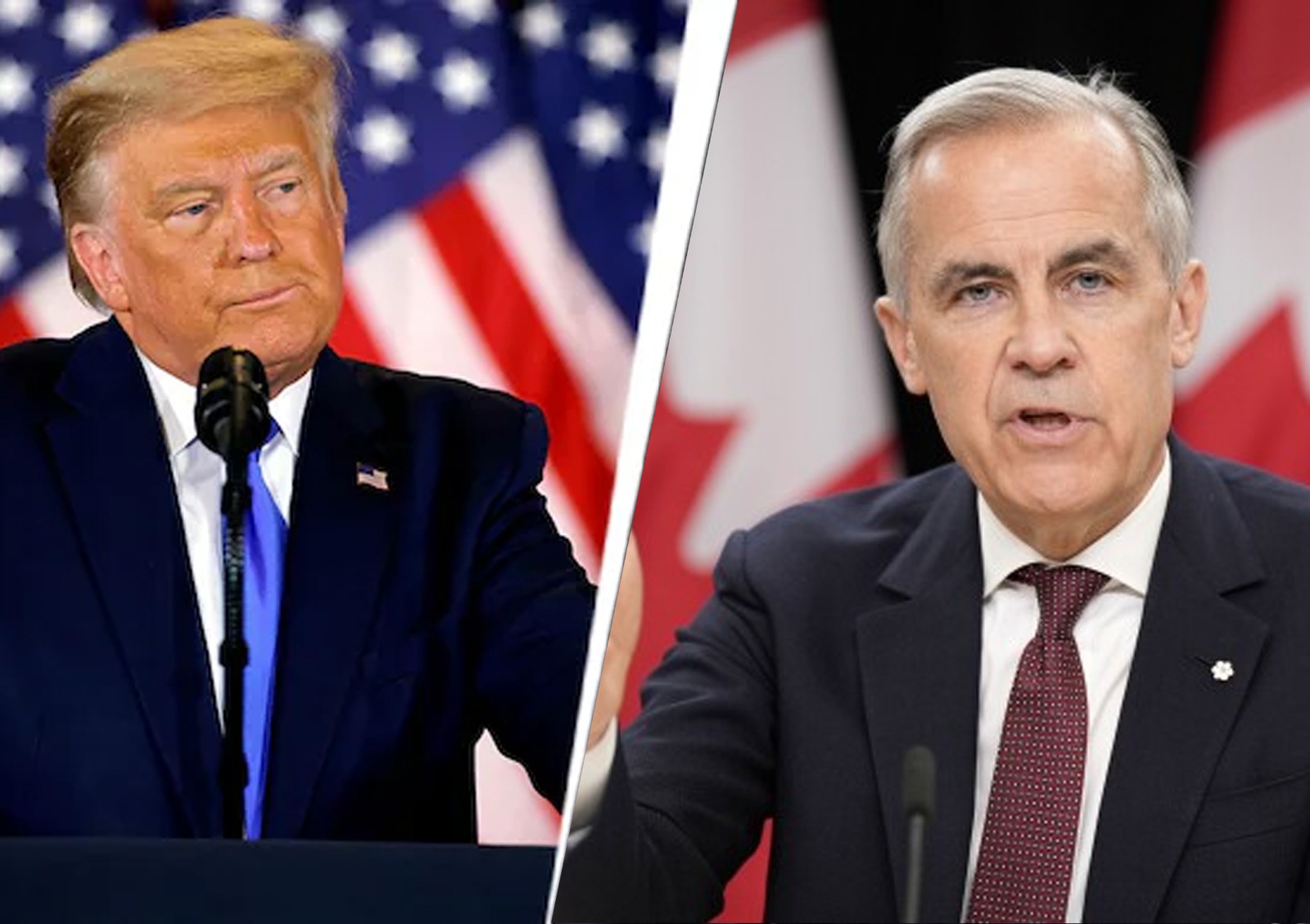
By Sulagna Halder
OTTAWA:
Canada is preparing to retaliate diplomatically and economically after US President Donald Trump announced on 10 July a steep 35 percent tariff on a wide range of Canadian imports, due to take effect on 1 August. The announcement, sent in an open letter via Trump’s Truth Social account to Prime Minister Mark Carney, cited Canada’s alleged failure to curb fentanyl trafficking and border enforcement as the primary justification.
Mr Carney responded swiftly. He pledged to “defend Canadian workers and businesses” and signalled willingness to negotiate a new trade deal before the deadline, aiming to avert what he called “unjustified” measures. He also pointed to progress in Canada’s efforts to counter fentanyl flows, dismissing the US claims as “not supported by evidence”.
The 35 percent levy exceeds prior tariffs, which stood at 25 percent for non‑USMCA goods. The latest proposal could override existing exemptions under the North America free‑trade agreement. Canada’s dollar fell initially, although markets later regained some composure as investors speculated on the outcome of negotiations.
In response, Ottawa is evaluating countermeasures. Government officials confirmed that Canada has already imposed equal retaliatory tariffs on US steel, aluminium and various other goods, with the option to extend such measures. Another possible tool is non‑tariff actions affecting energy, critical minerals or procurement policies.
Analysts caution that the move could reverberate through both economies, disrupting everything from automotive supply chains to agricultural exports. Canadian premiers are urging defence of domestic industries, with some provinces hinting at boycotts of American goods. During earlier rounds of tariff escalation, nearly 90 percent of Canadians reportedly favoured reducing reliance on the US.
Mr Trump’s letter offered a sliver of flexibility: he indicated the tariffs may be revised, “upward or downward” depending on Canadian cooperation. He further suggested a broad expansion of general tariffs (15‑20 percent) on other trading partners. Observers noted that this message followed similar tariff threats to 23 other nations, including Brazil and Mexico.
Markets reflected the uncertainty. The Canadian dollar dipped against the US currency after the announcement, and stock futures showed signs of volatility, even as the S&P 500 and Nasdaq held record highs.
Canada remains open to diplomacy. Mr Carney has set 21 July as a revised deadline to conclude new trade terms, signalling his government’s intent to restore stability. Experts believe the US may soften its approach if Canada demonstrates willingness to resolve contentious issues, particularly on trade barriers and drug control.
However, analysts warn that the broader climate of “tariff whiplash” marks a departure from post war free‑trade norms, reviving fears of escalating protectionism. As negotiations proceed, both governments face mounting pressure: Canada to defend its industries and sovereignty, and the US to balance domestic political demands with the risks of alienating its top trading partner.